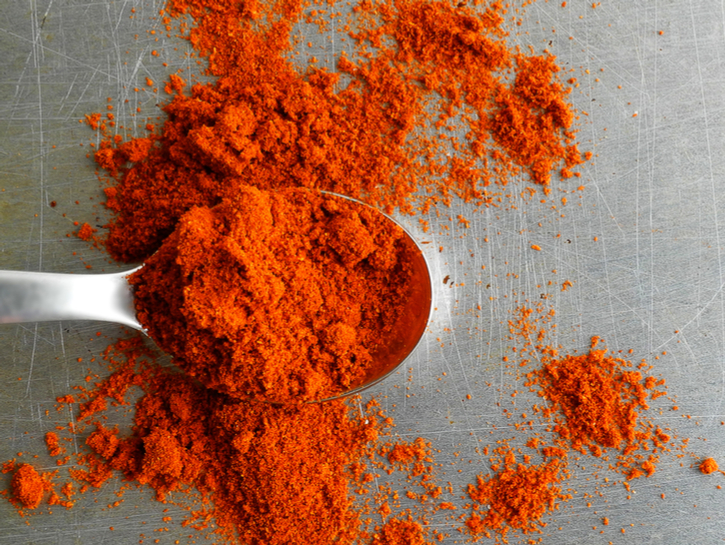Are you in the middle of your recipe and notice your spice rack is empty of much-needed paprika? Don’t panic. If you’ve run out of the spice, there are a few suitable substitutes that can work in your recipe, including:
- Ancho chili powder
- Cayenne powder
- Aleppo powder
- Black pepper powder
When substituting with cayenne powder, use 1/3 the spice that the recipe calls for. For the rest of the spices, you can substitute them equally, or begin by adding a lesser amount and slowly add more to reach your desired flavor. We’ve ranked the substitutes below!

Billion Photos/Shutterstock
How Do We Use Paprika?
Paprika is a ground spice made from peppers in the Capsicum family, which is related to chili peppers and bell peppers and native to South America. Paprika’s flavor depends on how much of the pepper’s rib and seeds are present when the grinding process begins. If there is no rib or seeds present, the paprika will be mild. If there is a large presence of the rib and seeds, the paprika will be more hot.
In the U.S., paprika is most commonly used by sprinkling the powder on top of a dish at the end of preparation, often topping meats and pasta sauces. But in other parts of the world, it’s added early in the process and the flavors are made more pronounced during cooking.
1. Ancho Chili Powder
When it comes to paprika substitutes, ancho powder is the best option. This spice is made entirely from sweet dried poblano chilies and has a mild heat relatively similar to most paprika powders as well as a rich, earthy undertone. Ancho powder is most frequently used with Mexican cuisine and, like paprika, the spice originates from Central America.

2. Cayenne Powder
Cayenne powder is commonly used in Latin American and Asian dishes, and if you’re a fan of hotter foods this spice can serve as a paprika substitute — if you can handle it. Because it’s so much hotter than paprika, when substituting only use 1/3 teaspoon of cayenne powder for every 1 teaspoon of paprika the recipe calls for.

stockcreations/Shutterstock
3. Aleppo Powder
Another substitute you can use in a pinch is Aleppo powder. It is more mild in flavor and heat than cayenne powder and more reminiscent of a mild paprika powder. It’s flavor is earthy and smoky, making it popular for Middle Eastern cuisine. Aleppo powder has a red color similar to paprika, but is most commonly found as flakes and not ground into a fine powder, so using this substitute could impact the texture of your dish.

4. Black Pepper Powder
Black pepper can be substituted for paprika to add a kick to the food you’re making. However, the color of the dish will be altered due to the absence of paprika’s red powder. Though black pepper can work to add flavor to the dish, it’s not the best substitute for paprika, so only use it when all other options are unavailable.

DeeaF/Shutterstock
